Recent Articles
Popular Makes
Body Types
2018 Buick Regal GS Road Test and Review
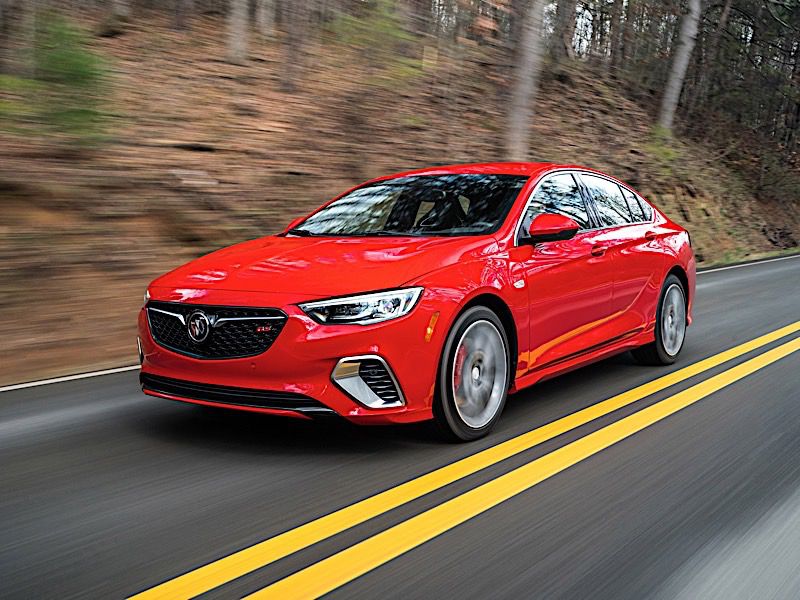
2018 Buick Regal GS front three quarter ・ Photo by General Motors
Buick introduced a slick new Regal for 2018, and when my colleague Carrie Kim tested the TourX wagon version, she had lots of good things to say about it. And having driven the Buick Regal TourX myself, I agree with her.
I’ve been given the assignment to test drive the hot-rod GS, which is based on the Regal Sportback hatchback model. I had high expectations for the Regal GS. Did Buick meet them? Let’s drive it and find out.
Legitimate German Roots
The Buick Regal may be one of the most underappreciated cars on sale today. The Regal is basically a rebadged version of the Opel Insignia, one of the cars that General Motors sells — or at least used to sell — in Europe. (GM recently sold off its European brands: Opel and Vauxhall.)
Though the Insignia is hardly considered a performance model in Europe, it still has legitimate German roots. In fact, U.S.-bound Regals are built in Germany. That means it handles curves better than you might expect, especially if you haven’t driven a new Buick in a while.
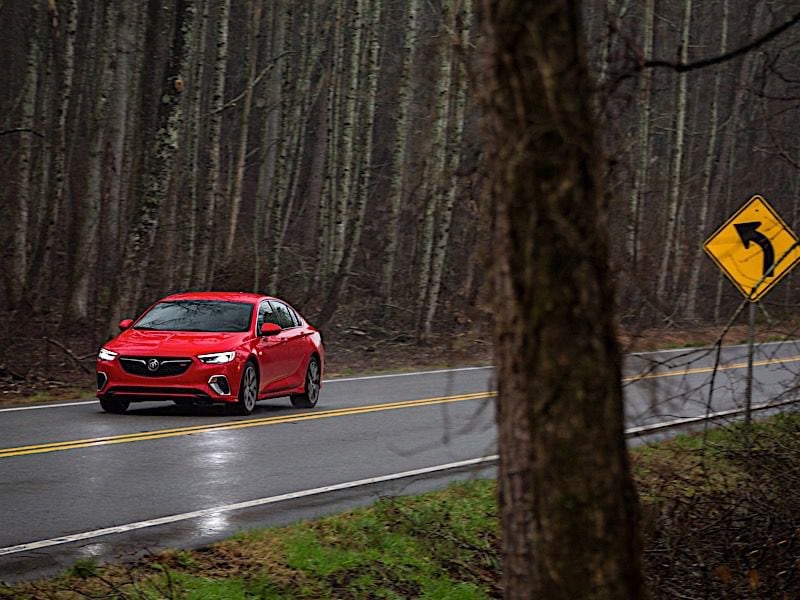
Photo by General Motors
The Legend of the Gran Sport
The GS (Gran Sport) name dates back to 1965, when Buick stuffed extra-large V8 engines into the Skylark and Riviera. (Historical side note: Back in ’65, Buick told a white lie about the size of the Skylark GS's 401-cubic-inch V8 engine. The brand called it a 400 in order to circumvent General Motors’ rules about the maximum engine size for small cars.)
When Buick introduced the Opel-based Regal for the 2011 model year, it included a GS version with a high-output turbocharged engine and an available manual transmission. But the company later watered down the last-generation Regal, dropping the stick-shift and the high-output engine.
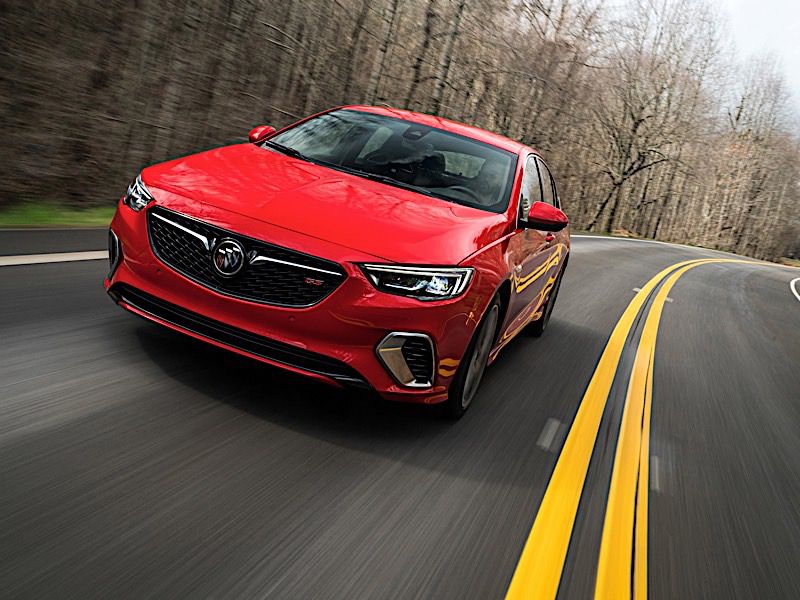
Photo by Buick
Souping Up the Regal
In comparison to last year's Regal or the base 2018 model, the new GS gets off to a running start. The biggest change compared to the base Regal Sportback is the powerplant: The GS ditches the regular Regal’s 250-horsepower turbocharged four-cylinder engine and replaces it with a 310-hp 3.6 liter V6.
A nine-speed automatic transmission and all-wheel drive are standard, as are bigger brakes with red Brembo calipers in front and a sport-tuned exhaust. From an appearance standpoint, the Regal gets 19-inch wheels, a GS badge on the grille, and unique front and rear fascias. These subtle changes make this handsome car even better looking.
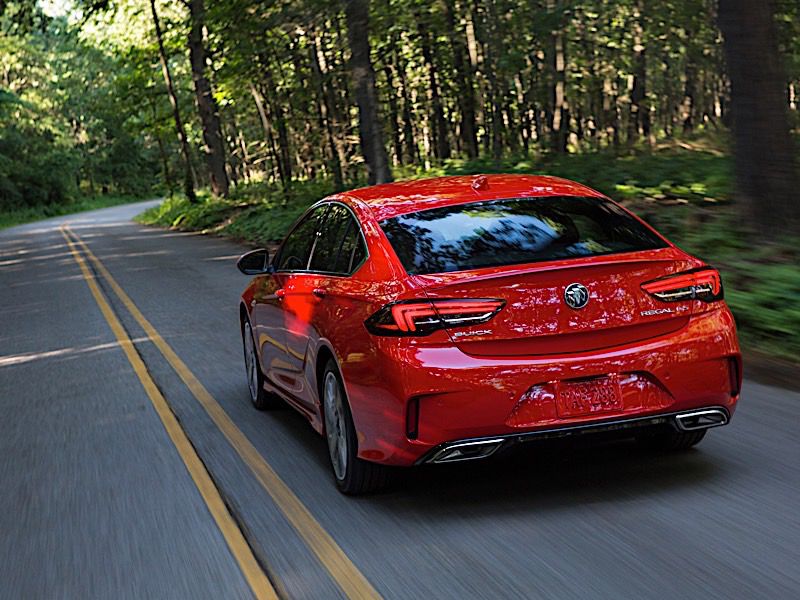
Photo by Buick
Interior Changes: Needs More
Inside, the Regal GS gets unique seats from the rest of the Regal line, with adjustable side bolsters and a thigh extender. It also receives a video-screen speedometer, black trim in place of woodgrain, and an optional head-up display. Unfortunately, that’s all. In my opinion, Buick could have spruced up the interior a bit more.
Not that there’s anything wrong with the Regal’s interior, mind you. The ergonomics are good, the control layout is straightforward (and vastly superior to last year's Regal), and the materials befit an entry-level luxury vehicle. But some sportier touches would be appropriate. How about some red stitching, or an embroidered “GS” on the seats? What about changing the video dash to red when “Sport” or “GS” mode is selected? Such things would enhance the sporty feel. But one of the biggest omissions is the lack of steering-wheel-mounted paddle shifters for the automatic transmission. Buick said drivers rarely use them. Then why not eliminate them from all GM cars? GM would never do that. Performance buyers may not use their paddle shifters often — but they do expect to find them.
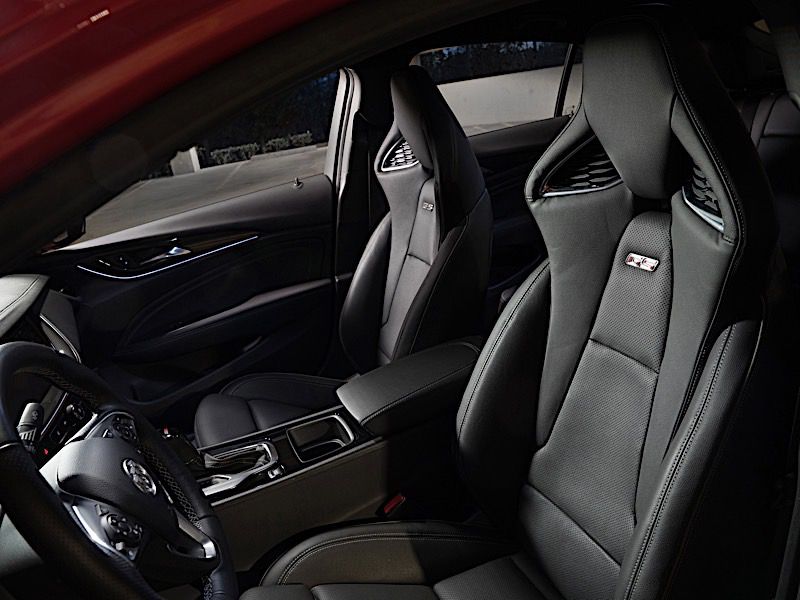
Photo by General Motors
The V6 has the horsepower, but not the torque.
The Regal GS’s biggest attraction is its 310-horsepower V6 engine, but this may be the biggest disappointment as well. The horsepower number is impressive — it’s 51 more than the watered-down turbo engine in the outgoing Regal GS — but the torque figure of 282 lb-ft is less so. Keep in mind that the base Regal, powered by a 2.0-liter four-cylinder, produces 260 lb-ft with front-wheel drive, and 295 lb-ft with all-wheel drive. Torque is what pushes you back in your seat, and it’s what a car like the Regal GS needs most.
The Regal GS is certainly not slow. It merges and passes with authority, just not much more authority than the regular Regal. The chief advantage of the V6 over a four-cylinder turbo should be off-the-line power, but the GS’s acceleration from a stop isn’t much more impressive than the turbocharged Regal. And the soundtrack from the so-called “sport-tuned exhaust” is a wet blanket. The Regal GS’s V6 was designed to propel family-size SUVs, and those humble roots show in the way it motivates the Regal. This is not a performance engine.
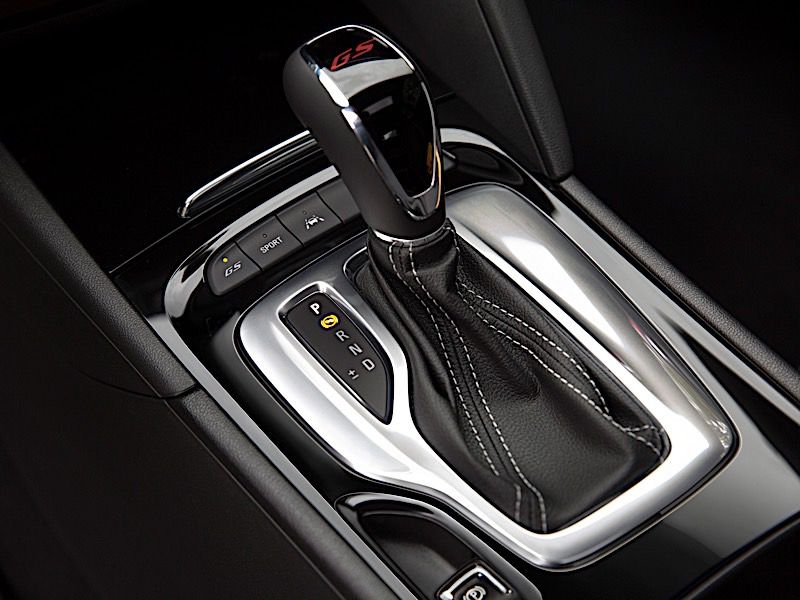
Photo by General Motors
Exploring Georgia in the GS
The Regal GS’s suspension isn’t that much different from other Regals; the chief difference is the adjustable shock absorbers, which can be altered by choosing Normal, Sport or GS modes. (The driving modes affect throttle response and steering feel as well.) There is a noticeable stiffening of the suspension in Sport and GS modes, though the ride always remains comfortable.
I drove the GS on some rather challenging roads, and the car impressed me. It rocketed through the curves with good grip and little drama. Like most all-wheel drive cars, the GS really hangs on in the corners, and you can exit the turns at full throttle without worry of breaking the tires loose. The chassis setup in this car is very, very good, and it’d be wonderful to see what it could do if it came with a better engine. Driving the Regal GS fast is fun, but not thrilling — and thrills are what I was hoping for from this hot-rod Buick.
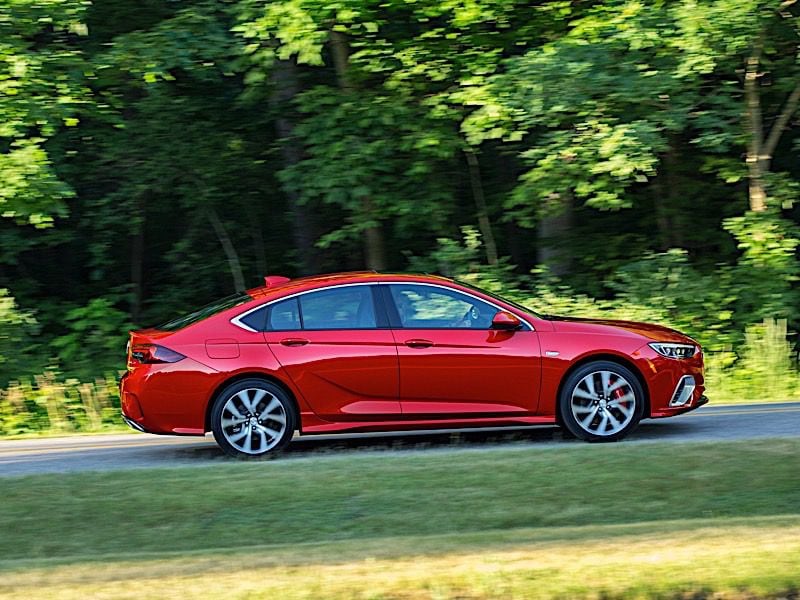
Photo by General Motors
A Ride That You Won’t Regret
During our press preview, Buick invited us to take off on our own if we wished, and that’s exactly what I did — seeking out suburban roads, urban traffic, freeways, and gentle country lanes. I have to take my hat off to the folks who engineered the Regal GS: It’s amazing that a car that handles so well can ride so comfortably and so quietly.
And when I say comfortably, I don’t mean wallowy; the Regal GS keeps body motions under control over bumps large and small. I’m old enough to remember when Buicks drove like roadgoing waterbeds, and it still tickles me that this car can deliver such good handling with such a smooth ride. I’ve driven lots of performance cars that make miserable daily drivers, and the Regal GS is at the complete opposite end of the spectrum.
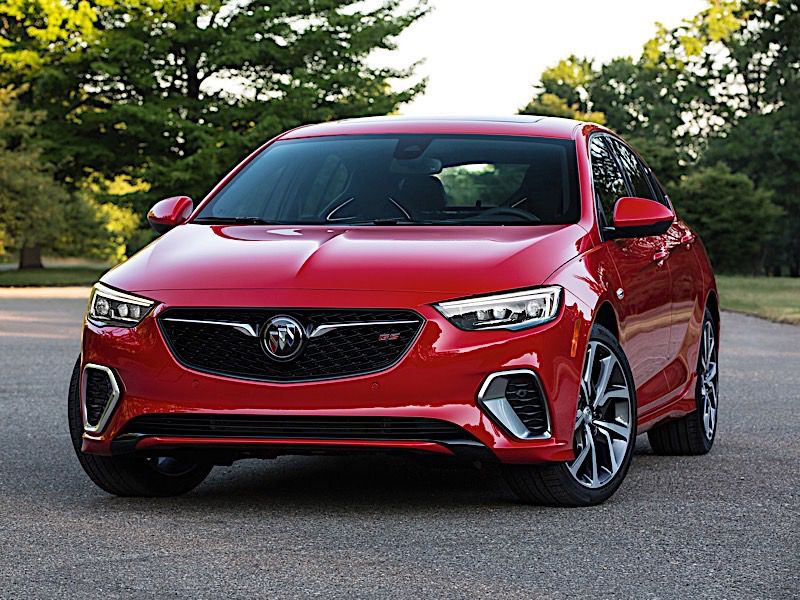
Photo by General Motors
The hatchback is incredibly practical.
Another highlight of the Regal GS is its "Sportback" body style. Though it looks like a sedan in profile, the Regal is actually a hatchback. Cargo space is 31.5 cubic feet with the rear seats in place and 60.7 cubic feet with the rear seats folded, numbers that surpass any sedan by a sizable margin and will even embarrass some small SUVs.
The way I see it, the chief advantage to the hatchback body style is not just room, but access. With the entire back end of the car lifted out of your way, loading bulky cargo into the Regal’s trunk is a cinch. Everything drops right in. It’s a nice contrast to the current crop of sedans: As rooflines get more swoopy (to aid aerodynamics), the trunk openings get smaller and smaller, and stuffing a big suitcase into a modern-day sedan can be a real chore. Not so in the Regal GS. And the Buick treats back seat passengers just as well as it does their luggage, with good headroom and plenty of legroom.
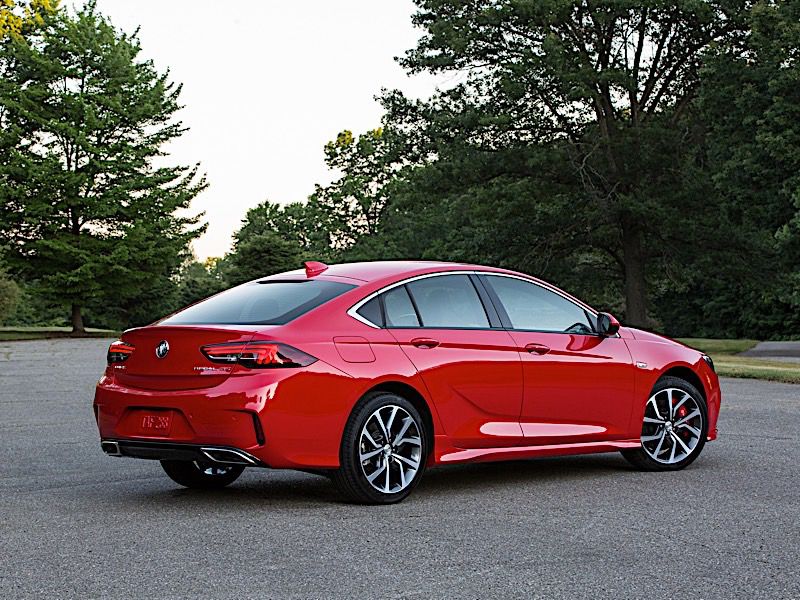
Photo by Buick
It's a good car — but is it worth what you’re paying?
There’s a lot I like about the Regal GS, but I’m still not convinced of its superiority. A big part of that is price: The Regal GS starts at $39,995 (including a mandatory $925 destination charge). That's $14,000 more than the base-model Regal Sportback and $5,200 more than a top-of-the-line Regal Essence with all-wheel drive. For that kind of price difference, I expect a serious bump in performance, and the Regal GS just doesn’t deliver enough.
Take that not just as an indictment of the GS but as a compliment to the regular Regal. We know General Motors can build a great performance car; witness the latest crop of Corvettes, Camaros, and Cadillac V-series models. Fitting a high-output turbo engine or even the twin-turbo V6 from the Cadillac lineup could turn the Regal GS into a world-class performer. Too bad Buick can’t get a little of that high-performance love.
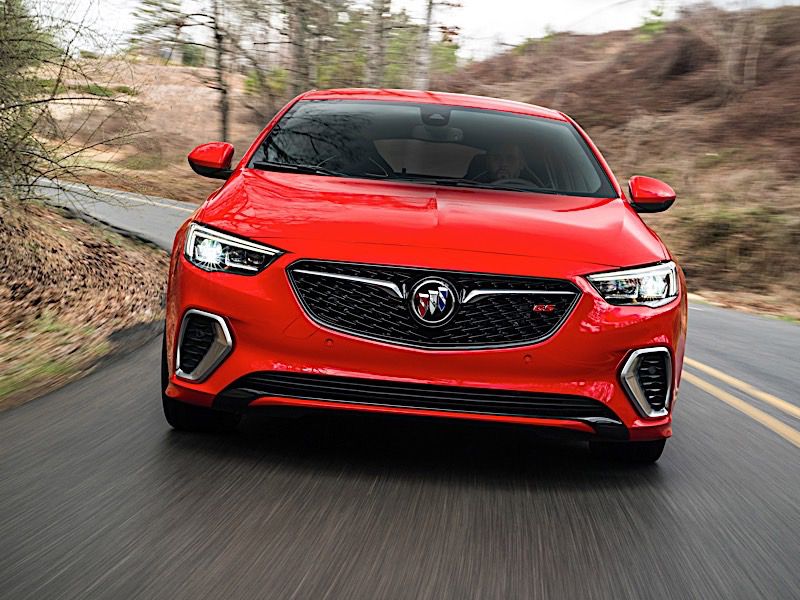
Photo by Buick
The Regal is great, but the GS might not be your best choice.
Now, I don’t want you to think I’m recommending against the Regal — I’m not. If you’re looking for a performance sedan that will really get your adrenaline pumping, it’s probably not your best choice; I’d suggest you spend a little more for a Kia Stinger, a thrilling up-and-comer that can be had with a twin-turbo V6 and all-wheel drive for just $1,500 more than the Regal GS.
Meanwhile, if you want a comfortable cruiser that knows its way around a curvy road, one that will let you get out your motoring ya-yas once in a while without the penalty of an uncomfortable commute, then there’s no question that the Buick Regal is a great choice. But you’d probably be just as well off with one of the standard models instead of the pricey GS.
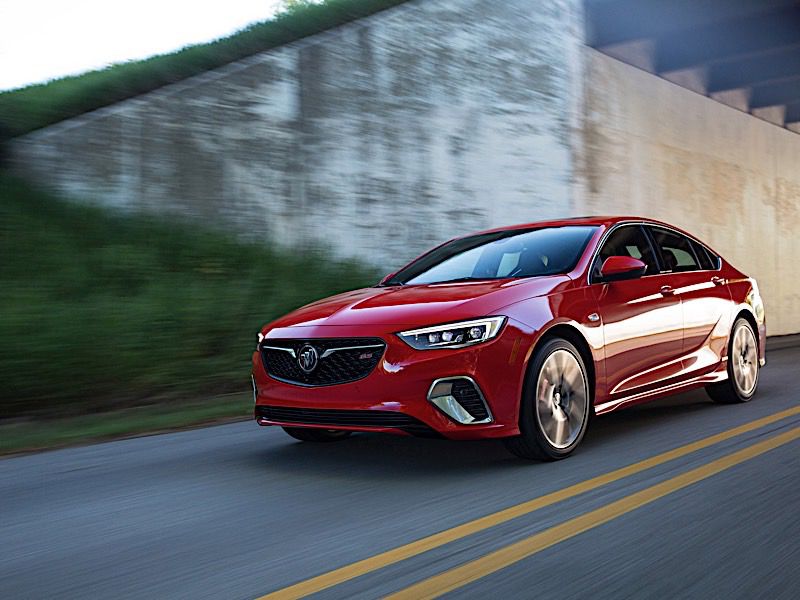
Photo by Buick